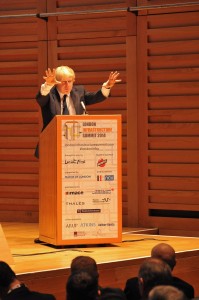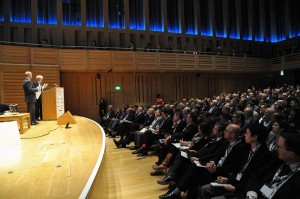It always surprises me with the speed of technology change, how quickly it can be not only understood and used but also accepted as the norm. There was a time in photography that the coverage of an event which in the dark ages, used to be done on film. The quickest a client could have images processed was after the photographer had legged it back to the lab, processed the film and had contact prints made, the equivalent of a proof sheet today and then picked an image to have printed for press prints.
Of course if the client wanted to pick the image for reproduction then that contact print had to reach the client first and then prints were ordered. Unless 100% rush charges were paid the production of prints was never less than another 24-48 hours so the standard lee time from event to images reaching the trade publications was normally several days.
Of course there has always been the newspapers that would turn an event image around and have the pictures processed overnight and into their presses for the next day, but this involved dedicated departments of printers and normally vast amounts of money invested in equipment and processes.
Then along came digital imaging and as an early adaptor I was sent all over the country covering press launches and supplying clients with images attached to emails sent as soon as I was back to my office. Bearing in mind these first digital pictures were only 1.3 mp total resolution and the camera had no screen to show the taken image. So at the time I was carrying around a small 6 inch television to use as a monitor and rushing back to the office to process each image individually in Photoshop and then attaching as small a file as possible to an email to send out on our dial up connection.
It sounds prehistoric now, but that was cutting edge technology in 1999!
In the intermediate years, we have seen amazing leaps in both the quality of the images, the file sizes and of course the equipment and means to handle images. We have passed through supply of images on floppy disc, CD and then DVD as the file sizes climbed and eventually the likes of Dropbox and Flickr for the sharing of digital images.
Today, using the correct equipment and skills it is possible for the average professional like myself to have images of an important speech not only shot and downloaded on location to a computer but also uploaded to the client before the speech has finished!
I covered an important London conference last week and was able to offer the client more than 40 selected images covering the whole days event before I even left the building. The keynote speech, which started at 11am, had images of the speaker on the clients own web site before noon. These are turn around times that would have shocked the largest press or media organization 10 years ago and now a properly equipped professional can better it.

But it hasn’t all been beneficial. Many photographers have gone out of business as the automation of correct exposure and focus has made taking the most basic of shots easy even for the common man. No longer is there the middle market of industrial progress work or the budget end of event work. These areas have been lost to the in house marketing assistant or foreman with a digital camera. The bread and butter work of the jobbing commercial photographer has declined.
The simplification of camera control has also lead to many larger companies into returning to in house photographers. Day to day portraiture, event coverage and case study work can all be covered by the competent employee. Because the investment in equipment for lighting and processing is no longer excessive. A good camera can take a picture hand held in most lighting situations today. This again has eroded the middle ground of a freelance commercial photographers business.

Lastly with the rise of the micro business, as more and more redundant business professionals decide to set up on their own, the requirement from this sector is almost non existent for the jobbing professional image maker, whether they be video or stills as these small businesses have no budgets for professional help.
The wedding photographer too has also seen a serious decline in income as being one of the first launching points of amateurs into professional photography combined with a recession has cut margins to the bone. Add this to the fact that there are far fewer people getting married in the old traditional big event way and we have a very much smaller cake that more and more professionals are fighting over. Less than 50% of weddings these days have a professional photographer.
Is this good for the client? Well, at the outset lower prices always looks like a win for the consumer. But in effect it’s reducing the number of skilled professionals out there and increasing the percentage of the low end, sell at any price, suppliers. And this of course can only result in the decline of quality and standards, which is of course not to the client’s advantage.
Every market finds it’s own level both in supply and demand but one thing is for certain, we haven’t seen the final stage of development of the technology and we haven’t seen the final death pains of this industry.
If I was asked to predict where our photography sector will be in 10 years time it would be my guess that with the continuing expansion of band width and the development of cameras to shoot both stills and video we will see the death of the separate stills and video professionals and the emergence of the imaging professional. A path I have already taken.
The photographer will need to improve his video skills to the point where he is covering any job with video coverage and then extracting stills from the footage as required. This is possible now for most web uses but will reach a quality in the future where it’s ideal for any reproduction requirements, print or display as well as web.
All cameras will include full computer integration. This will result in all images or footage shot being passed to as many client work stations as required instantly. Already we have low end cameras integrated this way with Facebook and Twitter and it’s only the major camera manufacturers trying to hold on to their own software use rather than allow a third party common platform to be installed that is stalling this process. Nikon and Cannon you need to be talking to Apple now to keep the professional market alive!
One thing that won’t change though, however simple the technology makes the image making process, there will always be people out there who can’t frame a picture, who don’t understand lighting balance or how to capture sound or even hold a camera steady, and for those people there will always be a requirement for assistance, move out the way here comes an imaging professional!